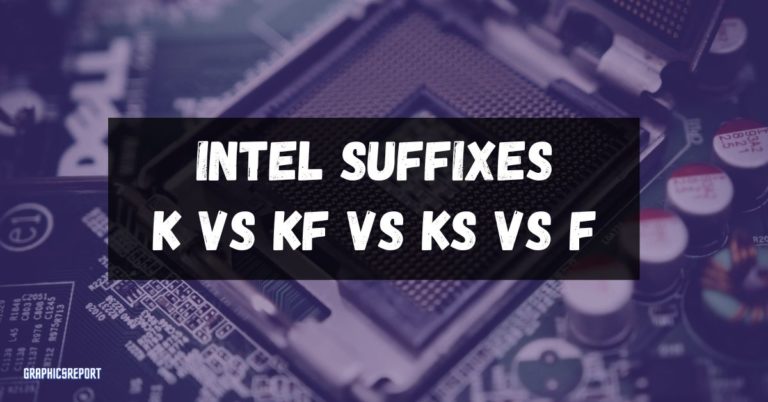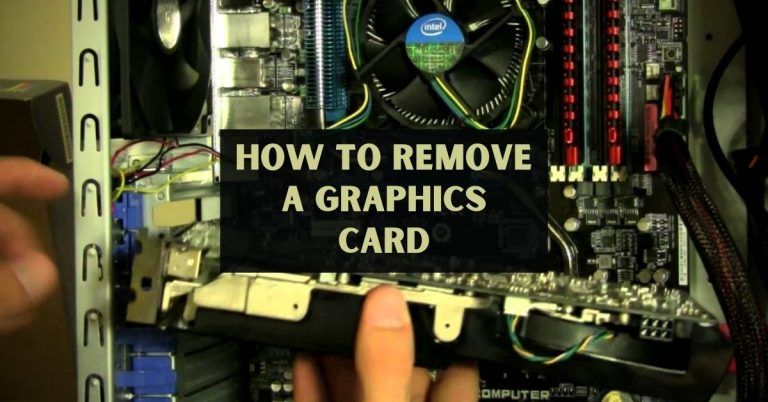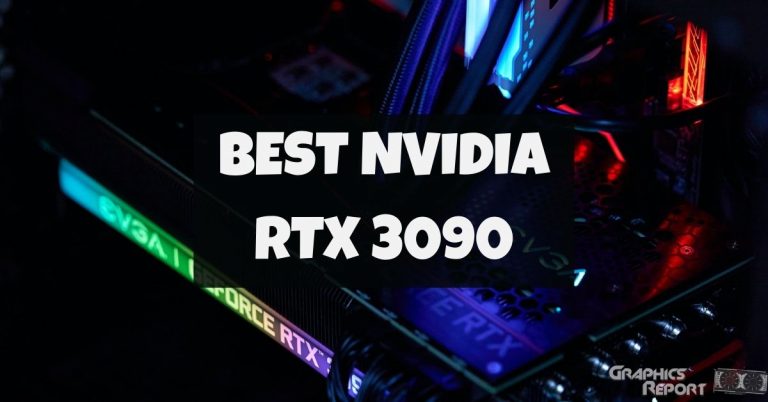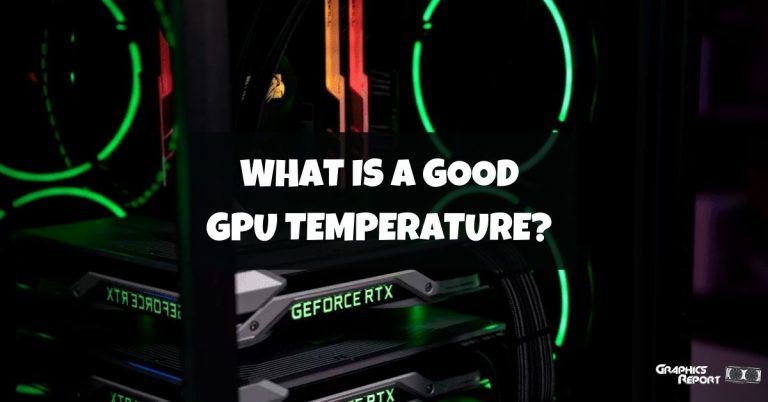
If you are a gamer and have been playing on PC, then there’s a good chance you have come across or at least heard the term “Anti-aliasing”. Console and mobile gamers also get this technology in their games, but it is impossible to adjust or turn off/on a console. That feature right there is a little PC-only novelty.
This technology smooths out the visuals of your game and makes it look better. Chances are, if you are a PC gamer, you have seen this setting while adjusting your in-game settings.
While most settings are pretty self-explanatory, some things like this setting can send you in a spiral thinking about what it is.
In this article, we will discuss all the ins-and-outs of Anti-aliasing, how it works, when it works best, and what type of method or technique you need to use to get the most out of your system by choosing the best combination of performance and quality.
What Exactly Does Anti-Aliasing Do?
Let’s get down to basics; your screen comprises millions of pixels that join up to show you what you see. Now a pixel is the smallest thing on your screen as your screen is made up of it. Pixels are still, however, squared in size, meaning that they have sharp edges that do not respond very well to rounded objects on the screen.
So anything that is not rectangular will be displayed somewhat incorrectly on those pixels since they are essentially just squares. Displaying rounded objects or corners would create jagged lines because the pixels showing it are sharp and not rounded, so your image will end up being “aliased”.
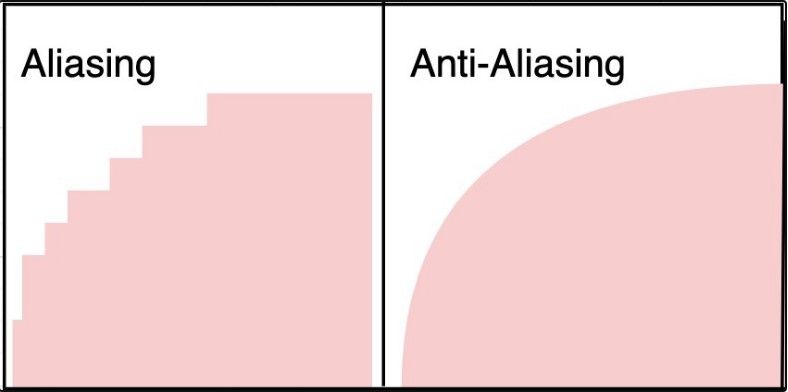
As the name suggests, anti-aliasing works to reduce those jagged lines as much as possible by using various techniques that require different amounts of resources and have varying impacts on your game’s performance. Some form of this technology is utilized by almost every single game these days.
Display technology has come a long way since its inception.
It has advanced to the point where modern displays have so many pixels crammed into it that the aliasing is genuinely not noticeable by the naked eye, and you won’t be able to tell the difference unless you try to look for it. Suddenly, those sharp edges don’t appear to be as off-putting as before.
Still, AA is implemented in pretty much every modern game to present the best visual fidelity possible on displays.
Since all displays these days are square-pixel based, it’s important to compensate for those who may not have the highest resolution displays in which “jaggies” would be noticeable to see.
Different Types of Anti-Aliasing
Resources are scarce, and you can’t just use up as much power as you like to power that 8K resolution of yours at 360Hz. Likewise, AA is a resource-heavy task, and its techniques require different amounts of power and thus have varying taxation on your system.
While some types offer unparalleled quality at the cost of reduced performance, others provide an incredible budget proposition of working even in lower-end systems. Let’s look at all of them.
#1- SSAA (Supersample Anti-Aliasing)
SSAA was the first-ever anti-aliasing method to hit the market and still, to this day, is the best visually. SSAA renders your game at a higher resolution than what is currently set and then downsamples that match your game’s resolution.
As you can imagine, this results in amazing visuals that lack any jagged lines because the image you are seeing is essentially a sharper, more crisp version of the same image.
Because SSAA produces the best results, it is extremely taxing on your GPU as it requires a lot of power to work efficiently.
This means that SSAA will not work on lower-end hardware, and even on high-end GPUs, it significantly hits the FPS, which can make your game feel less smooth. Rest aside, if you only care about your game’s looks and not the frame rate, you should opt for SSAA.
You’ll also like: How to increase FPS in video games in 2023?
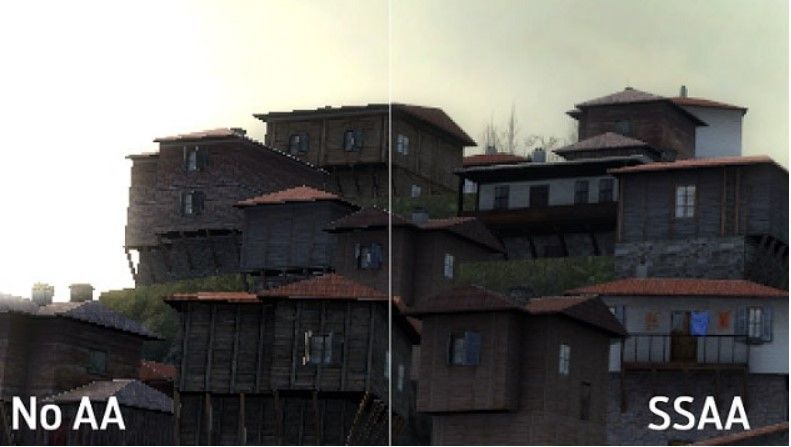
#2- MSAA (Multi-Sampling Anti-Aliasing)
MSAA is arguably the most common and popular type of AA available these days. That’s because MSAA requires less processing power than SSAA but still provides good results with noticeable improvement in image quality.
MSAA only smooths out the edges of an object and leaves the rest of the pixels untouched. MSAA basically takes adjacent pixels of the same color and removes the jagged lines from them, and this does give you much better visuals yet still does not tax your GPU as much.
You may have seen MSAA 2x, 4x, 8x settings in your game; this indicates how many adjacent pixels would be smoothed out as the higher the setting, the more you’ll see your performance dip.
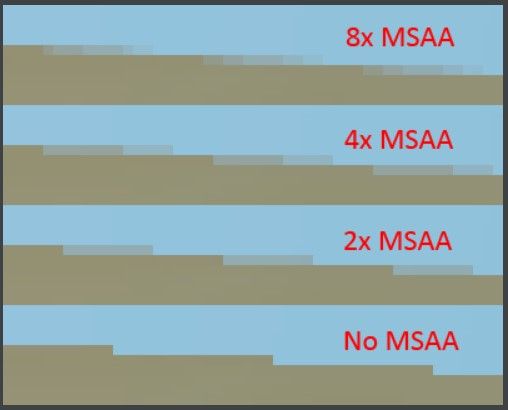
#3- CSAA (Coverage Sampling Anti-Aliasing)
CSAA is a modern technique developed by Nvidia. It is very similar to MSAA but slightly less accurate, thus very forgiving on your GPU as it does not require as much processing power as MSAA.
CSAA essentially samples fewer colors in a given area than MSAA, and because of this, it can be less color accurate but, at the same time, produces efficient results that do not stress the PC as much. The overall effect is on par with multi-sampling AA. Because of it being less resource-heavy, CSAA is an excellent alternative for modern low-end and midrange systems.
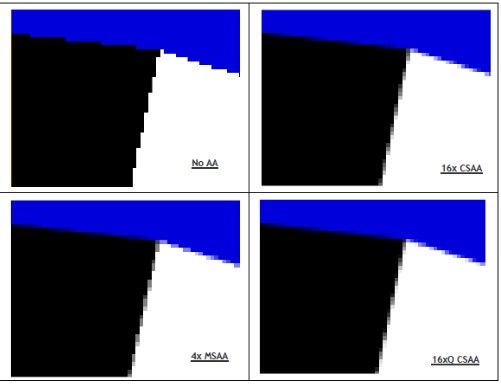
#4- EQAA (Enhanced Quality Anti-Aliasing)
EQAA is also very similar to MSAA and works as CSAA does; by sampling fewer pixels per area, which results in slight color accuracy, but it’s much less taxing on your PC. EQAA is a popular choice amongst budget-conscious gamers because it requires relatively less power and can run on lower-end hardware, and still provides improved visual quality.
EQAA is developed by AMD. Both CSAA and EQAA are only available in select modern titles and do not exist in older games.
#5- FXAA (Fast Approximate Anti-Aliasing)
Made by Nvidia, this method is likely the best technique for low-end PCs because it is the least demanding one out there. It requires significantly less processing power, but some would want to stick with the image quality as is because of the noticeably blurry results.
FXAA is a post-processing AA technique, which means that it smooths out the 2D image displayed on your screen instead of processing the 3D geometric shapes. This results in a more blurry picture, but it still does allow a somewhat feasible solution to jagged lines and rough edges to be achieved on lower-end hardware.
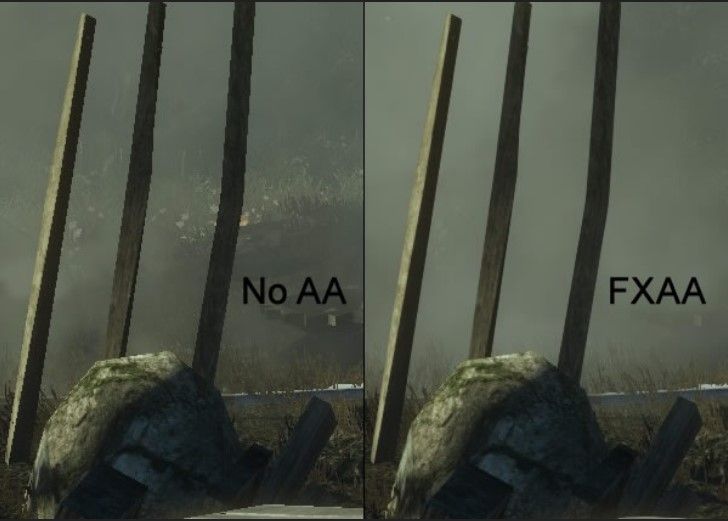
#6- TXAA (Temporal Anti-Aliasing)
Nvidia also develops the TXAA technique, but it only works on modern GPUs. It produces noticeably better image quality than FXAA but doesn’t require too much power, making it a good candidate for midrange systems. However, the results can still come out to look a little blurry.
TXAA uses various AA techniques and combines them in a complex way that eliminates temporal aliasing and the jagged lines that create sharp edges around objects. It also smooths out the movement of the objects in your game. For example: if your frame-rate is lower than the actual sample rate of the object’s motion in-game.
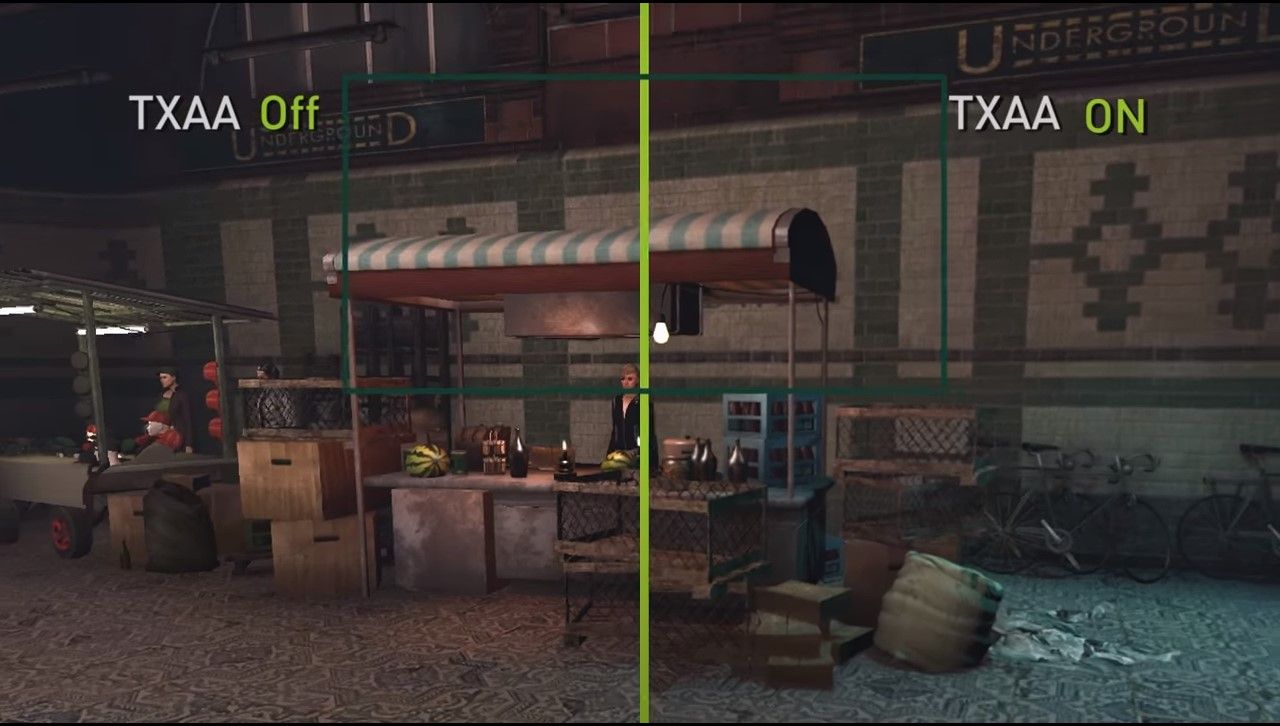
#7- MLAA (Morphological Anti-Aliasing)
MLAA is also a post-processing based AA technique developed by AMD. MLAA’s winning proposition is also that it works on lower-end hardware and does not require much system resources. But, much like other post-processing AA techniques, it creates a blurry image at the end,
MLAA identifies discontinuity patterns on your screen and blends colors in the neighborhood of these patterns to perform effective reduction of rough edges around objects in an image.
It is the precursor of a new generation of real-time techniques that rival MSAA. However, MLAA can create a more blurry image than even FXAA in some cases.

#8- DLSS (Deep Learning Super-Sampling)
DLSS is the newest technology listed here by far. Nvidia developed it and currently only works on Nvidia’s Volta, Turing, and Ampere (if you can get your hands on those) graphics cards because they require proprietary Tensor cores that are only available in those GPUs. DLSS works in a complicated way as it is made to improve your framerate first and foremost while maintaining crisp image quality.
DLSS is only available on a few games and does not work on any old title. The results from DLSS are comparable to that of SSAA.
Still, just like SSAA, it requires quite a lot of power, as it is essentially an SSAA derivative, to render those frames and thus only works on Nvidia’s modern architecture GPUs. Essentially, DLSS renders the games at a much higher resolution and then downsamples it to your internal resolution via artificial intelligence.
DLSS takes a standard aliased frame from your game and creates a perfect matching frame, and then both frames get sent to Nvidia’s supercomputers. The supercomputer trains the DLSS model to recognize aliased inputs and generate high-quality anti-aliased images that match the “perfect frame” as closely as possible.
The method is made to improve your game’s visual quality even at lower resolutions while giving you stable frame-rates, and the anti-aliasing just gets added in as a bonus.
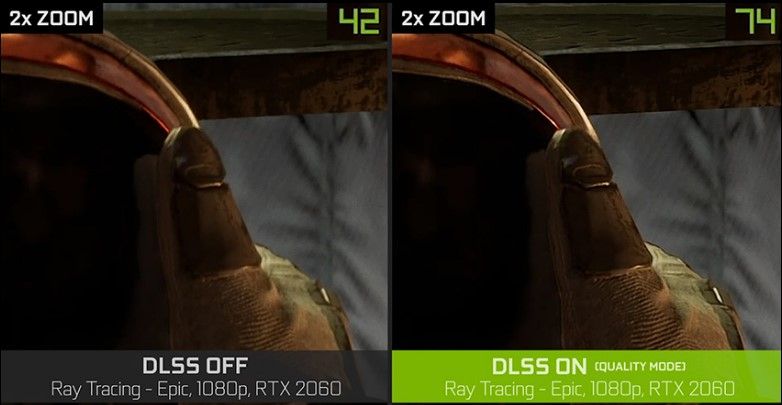
You can learn more about DLSS and why it is so exciting here.
Related content:
- What is gpu scaling
- What is AMD’s fidelityfx super resolution
- What is crossfire
- What is g-sync ultimate
- What is sli
What Is The Best Method? (Is It Worth It? Should You Turn It off?)
While there are objective answers to this, it needs to be subjective because not everyone has the same setup. Your choice of the ideal AA technique depends on your GPU’s capabilities, your display setup, and your game.
On top of all that, your personal preference for image quality and the game’s performance (FPS) also plays a vital role in making this choice.
If you have a low-end system with limited resources, you’re better off with post-processed AA techniques where what’s being displayed on your screen is getting anti-aliased and, thus, is not taxing on your GPU as much.
FXAA, CSAA, MLAA are on the bottom end of the spectrum because of their minimal improvements in visual quality but still being able to run on low-end systems offering at least some level of a solution to annoying jagged lines to budget-conscious gamers.
On the contrary, you have SSAA, the crème of the pie in terms of AA. Being the first-ever type to hit the scene, it still holds up to be the best looking visually.
It produces breathtaking results but at a very high cost. That cost is a very high-end system as SSAA needs the most processing power out of all the methods.
MSAA is currently the most popular method as it offers the best combination of performance and quality. It produces results on par with SSAA but at much less processing power by only smoothing the edges of aliased objects and not the entire image.
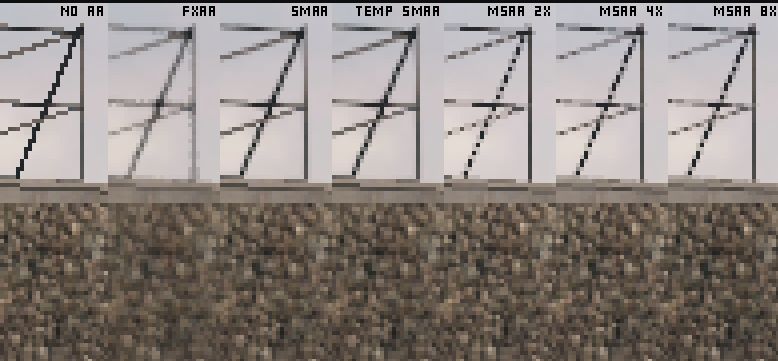
MSAA does not make your FPS dip as much but still offers significantly better image quality than no AA at all.
There are some more obscure and less common types of AA as well that very few games take advantage of, like EQAA, TXAA, and DLSS. If your graphics card and game supports these, then you can implement them to experience better image quality and relatively good frame-rates at the cost of some performance.
Ultimately, your choice comes down to your circumstances. Like I mentioned before, if your display is 4K and less than, say, 30 inches, then you will hardly even notice aliasing as the pixel density is so high that it is already compensated for out of the box because of this.
The bigger your display, the more jaggies you will notice because more pixels need to be filled in. And, in most games, you will only find one or (at best) 2 types of AA, and you will be limited to those only, so your choice narrows down quite a lot based on the game as well.
Lastly comes your personal preference. Do you want an incredibly sharp and detailed image with no artifacts, or do you want the absolute best FPS?
This is something that will vary from person to person and their liking. For instance, you may wish to have crisp visuals at the cost of lower FPS for single-player games like Red Dead Redemption 2 but, for esports titles like Rainbow: Six Siege, you may prefer to get the most FPS possible and not care much about the visual details.
In my opinion, the best method out right now is MSAA, as it strikes the perfect balance between image quality and performance. But for lower-end hardware, FXAA (or SMAA) makes the most sense as it provides comparable quality while not being very demanding at the same time.
DLSS is also another method taking PC gaming by storm and paving the way for a revolution in the industry. DLSS 2.1 could even, debatably, be the best technique today, but it’s not a new AA technique but rather an FPS-booster technology for RTX cards first.
Anti-Aliasing is not on the same verge as it was ten years ago. While some form of AA was necessary back in the days, most displays are so high-res and sharp these days that aliasing is not an issue anymore.
It is simply worth it if you can notice your game producing “jaggies” and affecting your immersion. Otherwise, if you cannot even see the jagged lines and rough edges, then turning it off has become a viable option these days.
Final Thoughts On It!
When Anti-aliasing first came to the market, it made a huge difference and made the gaming experience worlds better. Fast forward to 2020, and display technology has gotten infinitely better.
With the rise of high-res 4K (and even 8K) displays, you are packing so many pixels into a small area that aliasing isn’t even noticeable anymore.
For larger size and lower resolution displays, however, AA still can make a big difference, providing better image quality and more immersion, enhancing your overall gaming experience.
What type of AA is the best, or whether AA is even worth it is up for you to decide unless you want the objective answer, then it’s SSAA. However, with emerging technologies such as Nvidia’s DLSS, we can see a revolution coming sooner rather than later.
Frequently Asked Questions (FAQs)
1- Should I turn AA on or off?
You should turn it on to improve your game’s visual quality and provide you with more immersion. If you have a high-res display that is relatively smaller in size, then you are better off turning AA off (if you don’t notice any aliasing) to get better performance instead.
2- Is AA good?
It is excellent as it can make your game look significantly better and immerse you into the virtual game world even more by removing jagged lines and smoothing out rough/sharp edges.
3- Does AA affect FPS?
The short answer is yes. The long answer is that it depends on the type of AA you’re using in your game. SSAA can significantly affect your performance while other (post-processing based) techniques like FXAA, CSAA, MLAA are substantially less demanding.
4- What is the use of AA in games?
Your screen is made up of millions of pixels that are rectangular in size. So when round shapes, curves, or corners are shown in games, they come off as squared-off and create “jagged lines”; imagine seeing blurred stairs instead of a perfectly round line.
To counter this, we have Anti-Aliasing, which tries its best to reduce aliasing and give you a more natural, better-looking image.

